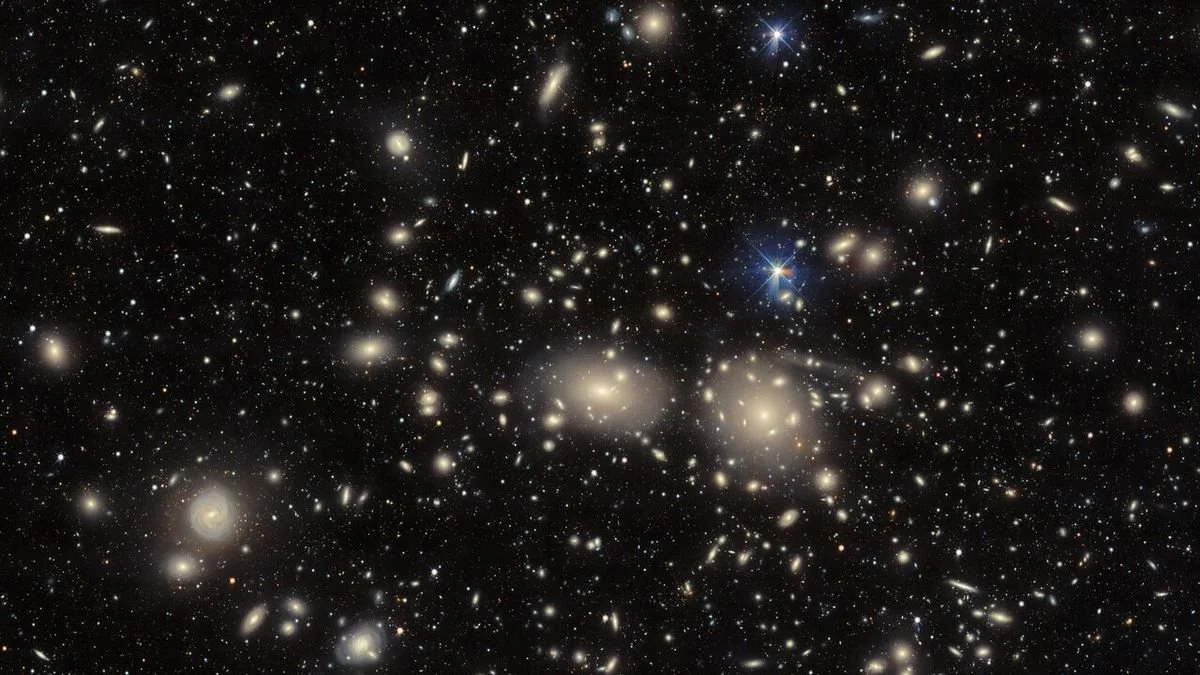A Brief History of Dark Matter
Background credit: COZMIC Simulation
What is Dark Matter?
1930s
In 1933, Dr. Fritz Zwicky was looking at the Coma galaxy cluster (a group of ~1000 galaxies) using the Mt. Wilson Observatory in California. He was specifically interested in measuring the mass of the system, which he did using two different values from his observations: velocities and luminosity.
How quickly galaxies move relative to one another within the cluster is governed by how massive the system is, or how much gravitational influence it has. Therefore, using the velocities of the galaxies, Dr. Zwicky calculated the total mass of the cluster. For his other method, he used the starlight from all of the galaxies to infer how many stars were in the cluster, and therefore calculate a total mass.
However, when comparing his results, he found that the mass he calculated using the velocities of the galaxies was much higher than then mass calculated from the luminosity. This discrepancy was remedied by “invisible matter” existing within the system that increased the mass, causing the galaxies to move quicker, but did not emit any light. Fritz then coined the term for the invisible substance as “dark matter”.
Unfortunately for Dr. Zwicky, many scientists of his time chalked this unusual result to potentially fault data or data analysis, and his discovery went largely ignored for decades.
1970s
Nearly a half century after Dr. Fritz Zwicky’s analysis, Dr. Vera Rubin began investigating galaxies and how the stars within them rotate.
The left-hand side of this video exhibits what we thought galaxies should rotate like, with much faster stars in the center, and velocities decreasing as you moved further out. However, Dr. Rubin actually found velocities that showed the behavior on the right-hand side of the video. The stars were moving fast, and their velocities were not decreasing radial distanece, thus showing a flat rotation curve that you can see beneath the galaxy in the video.
These flat rotation curves were completel contrary to what we believed to be physical, and it could only be explained by the mysterious “dark matter” that Dr. Zwicky had introduced nearly fifty years prior. This work as well as many other projects around this timeframe sparked the field of dark matter physics that is known today.
Today
After many decades of research, we now believe that dark matter makes up approximately 25% of our universe, while “regular” matter (like protons, neutrons, and electrons) makes up only ~5%. In the 1990s, we also discovered dark energy, which is causing the universe to expand at an accelerated rate, and we believe that this is about 70% of our universe.
We have many running theories as to what dark matter is, and the leading theory is that dark matter is a new species of particle, unlike the ones we are familiar with. The specifics of its properties ranges, depending on the model. The leading theory is Cold Dark Matter (CDM):
Cold Dark Matter (CDM)
Particles that move much slower than the speed of light
Interacts very weakly with ordinary matter and electromagnetic radiation

